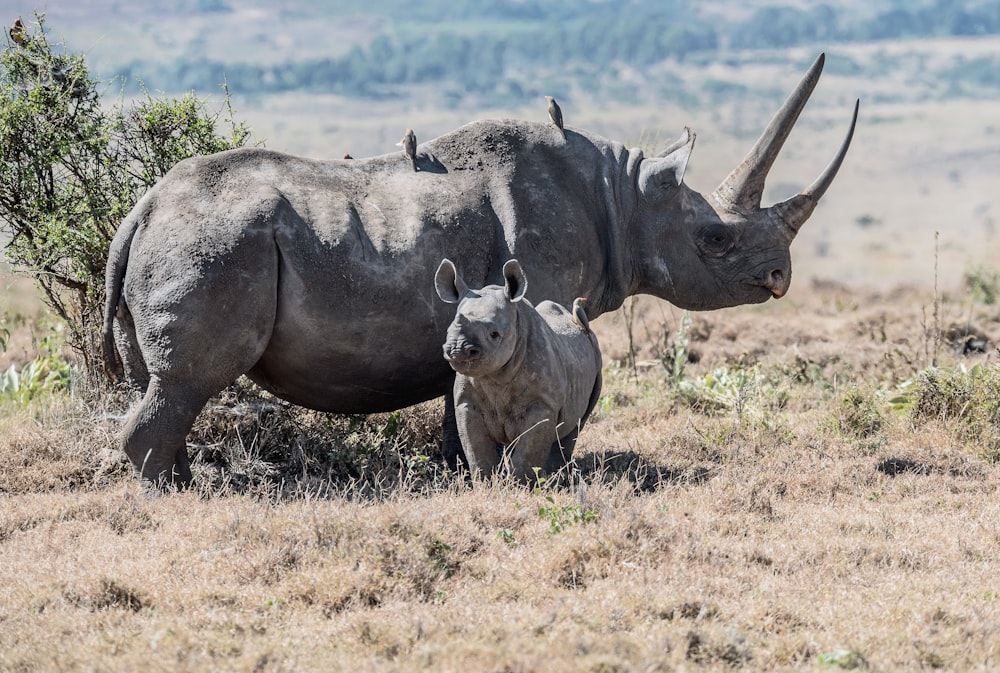The Black Rhinoceros: A Majestic and Endangered Species
The Black Rhinoceros, also known as the Hook-Lipped Rhinoceros, is a majestic and iconic species that is native to sub-Saharan Africa. Unfortunately, this species is also highly endangered due to poaching and habitat loss, and conservation efforts are ongoing to protect these animals and ensure their survival.
Physical Characteristics
The Black Rhinoceros is a large and powerful animal, with a distinctive hooked upper lip that it uses to grasp and pull vegetation. They have two horns, with the front horn being longer and more prominent than the rear horn. These horns are made of keratin, the same material that makes up human hair and nails, and are not attached to the skull.
The Black Rhinoceros has a thick and rough skin that is gray or brown in color, with folds and creases that help it to regulate its body temperature. They have poor eyesight but an excellent sense of smell and hearing.
Temperament and Personality
The Black Rhinoceros is typically a solitary animal, although they may occasionally form small groups. They are known for being aggressive and territorial, particularly during mating season, and have been known to charge at perceived threats.
Despite their reputation for aggression, Black Rhinoceros are also known to be intelligent and adaptable animals. They are able to thrive in a range of environments and are able to adjust their behavior and diet as needed.
Uses and Applications
The Black Rhinoceros is not typically kept as a pet or used for any specific purpose, although their horns are highly valued in some cultures for their supposed medicinal properties. Unfortunately, this has led to widespread poaching of Black Rhinoceros for their horns, which has contributed to the species' endangered status.
Health and Care
In the wild, Black Rhinoceros require a large and varied diet of grasses, leaves, and other vegetation. They also require access to fresh water and need to be able to move freely across a range of habitats.
In captivity, Black Rhinoceros require careful management and a high-quality diet that is tailored to their specific needs. They also require regular veterinary care to ensure their health and well-being.
Conclusion
The Black Rhinoceros is a majestic and iconic species that is unfortunately highly endangered due to poaching and habitat loss. Despite their reputation for aggression, these animals are intelligent and adaptable, and play an important role in maintaining healthy ecosystems.
Conservation efforts are ongoing to protect the Black Rhinoceros and ensure their survival, including efforts to reduce poaching and preserve their natural habitats. While there is still much work to be done to save this species, the Black Rhinoceros remains an important and fascinating animal that deserves our attention and protection.


Comments
Post a Comment